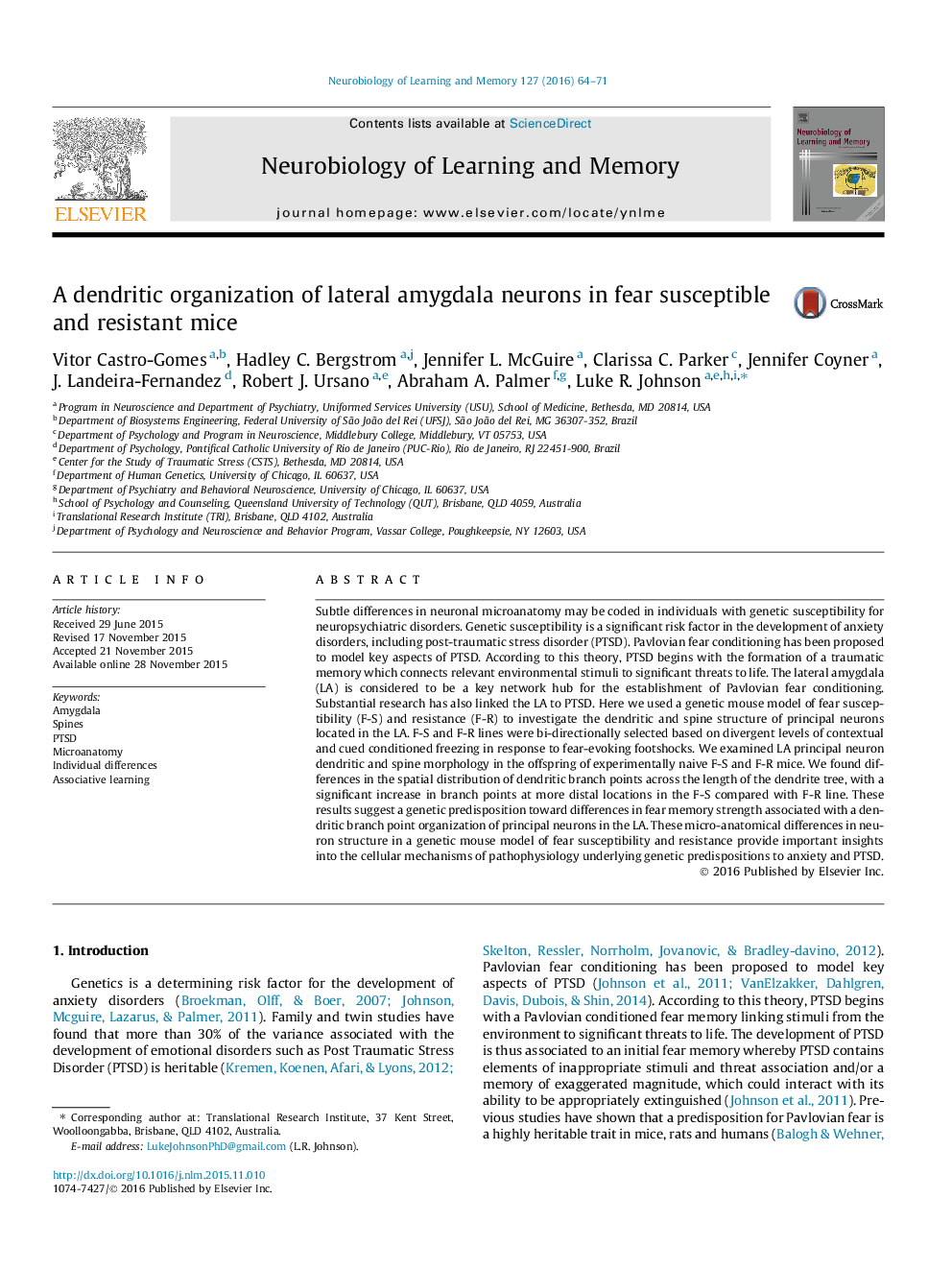| Article ID | Journal | Published Year | Pages | File Type |
|---|---|---|---|---|
| 936433 | Neurobiology of Learning and Memory | 2016 | 8 Pages |
•Genetic models are powerful tools to help understand anxiety disorders.•We investigated the structure of principal neurons of the Lateral Amygdala.•We found an increase in branch points at more distal locations in the F-S mouse line.
Subtle differences in neuronal microanatomy may be coded in individuals with genetic susceptibility for neuropsychiatric disorders. Genetic susceptibility is a significant risk factor in the development of anxiety disorders, including post-traumatic stress disorder (PTSD). Pavlovian fear conditioning has been proposed to model key aspects of PTSD. According to this theory, PTSD begins with the formation of a traumatic memory which connects relevant environmental stimuli to significant threats to life. The lateral amygdala (LA) is considered to be a key network hub for the establishment of Pavlovian fear conditioning. Substantial research has also linked the LA to PTSD. Here we used a genetic mouse model of fear susceptibility (F-S) and resistance (F-R) to investigate the dendritic and spine structure of principal neurons located in the LA. F-S and F-R lines were bi-directionally selected based on divergent levels of contextual and cued conditioned freezing in response to fear-evoking footshocks. We examined LA principal neuron dendritic and spine morphology in the offspring of experimentally naive F-S and F-R mice. We found differences in the spatial distribution of dendritic branch points across the length of the dendrite tree, with a significant increase in branch points at more distal locations in the F-S compared with F-R line. These results suggest a genetic predisposition toward differences in fear memory strength associated with a dendritic branch point organization of principal neurons in the LA. These micro-anatomical differences in neuron structure in a genetic mouse model of fear susceptibility and resistance provide important insights into the cellular mechanisms of pathophysiology underlying genetic predispositions to anxiety and PTSD.
